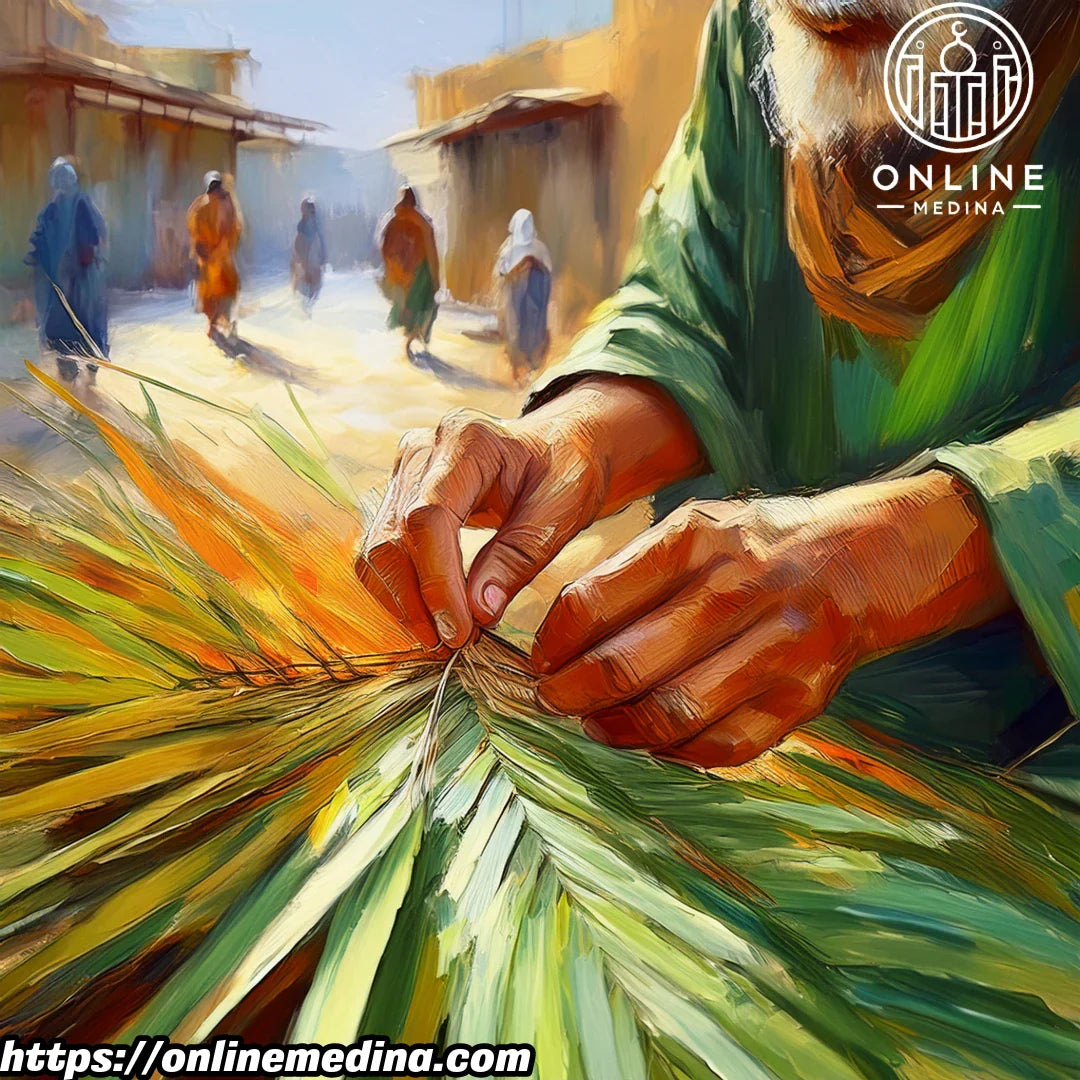
🎬 EPISODE 6: Moroccan palm basketry
EPISODE 6. Woven with patience and skill, Moroccan palm leaf baskets tell a story of ingenuity and resilience, that of artisans who draw from nature to create objects that are both useful and aesthetic.

📜 An ancestral craft rooted in nomadic life
Basketry in Morocco dates back thousands of years. Since ancient times, Berber communities have woven everyday objects using palm leaves, esparto grass and reeds.
- Prehistoric era: first baskets made from plant fibers for food storage and transport.
- Carthaginian and Roman periods: weaving techniques influenced by the Mediterranean world.
- Middle Ages: the growth of medinas and souks boosted local crafts and basket-making.
- Modern era: artisans now create baskets and decorative pieces tailored to contemporary needs.
In Marrakech and Fez, many craftsmen combine basketry and leatherwork to create unique hybrid pieces.

📜 Natural fibers and sustainable design
Moroccan baskets are made from ecological materials that guarantee durability and character:
- Palm leaves: strong and flexible, ideal for bags, mats and baskets.
- Alfa grass: a wild fiber from the Atlas Mountains, prized for its resilience.
- Reed and bamboo: lightweight options for furniture and home accessories.
- Rush and seagrass: allow for intricate, airy weaves.
📍 Southern oases like Zagora and Rissani are traditional sources for these plant-based materials.

📜 A women-led craft passed down through generations
Basket weaving in Morocco is mostly handed down from mother to daughter. It’s a living legacy of female knowledge and creativity.
- Learning begins in early childhood with precise braiding techniques.
- Regional patterns and styles vary, often reflecting tribal identity.
- Many baskets are now customized with dyes, geometric designs, or leather details.
Today, this ancestral expertise finds new life in interior design and modern fashion.

📜 Palm basketry meets modern living
Moroccan palm basketry is not limited to traditional baskets. It now features in everyday life and stylish decor:
- Market baskets for zero-waste shopping.
- Storage boxes and organizers for natural home aesthetics.
- Handwoven straw hats as icons of Moroccan fashion.
- Wicker furniture, rugs and lampshades with artisanal charm.
This sustainable craft is now a highlight of contemporary design and eco-conscious living.
📜 Online Medina and the future of handmade baskets
Digital platforms have helped Moroccan basketry reach global audiences.
- Online Medina promotes authentic creations from artisans in their local communities.
- Export markets in Europe and the US are booming.
- Collaborations with international designers bring fresh perspectives and recognition.
💡 Why choose a handmade palm basket?
- Eco-friendly and biodegradable
- Durable, practical and timeless
- Every item is handmade and unique

🎯 A timeless heritage with global appeal
In a world embracing natural materials and handmade artistry, Moroccan palm basketry stands out as a sustainable and meaningful tradition.
By choosing a woven basket, you support local artisans, eco-conscious values, and a craft that continues to thrive.
📌 In the next episode: Explore Essaouira and its iconic thuya wood marquetry, another jewel of Moroccan craftsmanship!
🧺 Drawn to natural materials and weaving? Visit Online Medina to see more handwoven creations.
